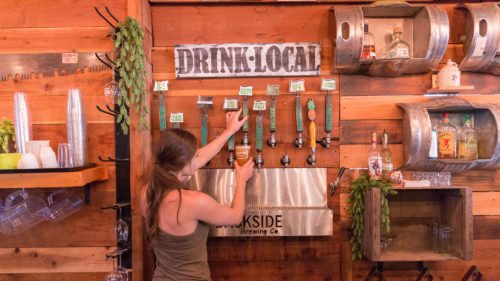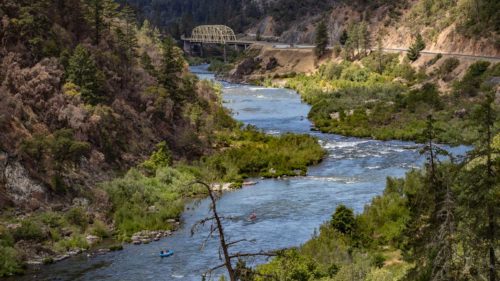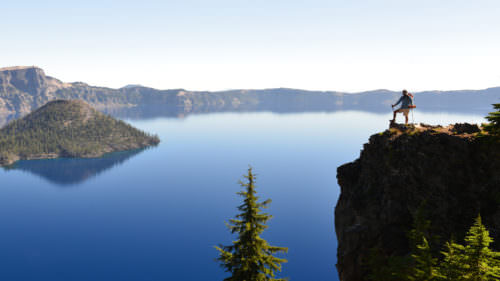Southern Oregon is a vast region of majestic mountains, deep dark caves, crystal-clear rivers and pristine alpine lakes, including famed Crater Lake, whose sapphire color can only be fully appreciated in person. And while there’s plenty of natural beauty to drink in, the region also boasts five designated wine regions — Elkton, Red Hill Douglas County, Umpqua Valley, Rogue Valley and Applegate Valley — and The Great Umpqua Food Trail, along with countless family-friendly attractions.
With its numerous state and county campgrounds — most equipped with either full or partial hookups — Southern Oregon is an ideal destination for RVers. Travel in your self-contained home on wheels, cook over an open fire and discover all the natural, wide-open spaces that this region has to offer.
If you need some help getting started, here’s a suggested five-day itinerary to get you on the road.
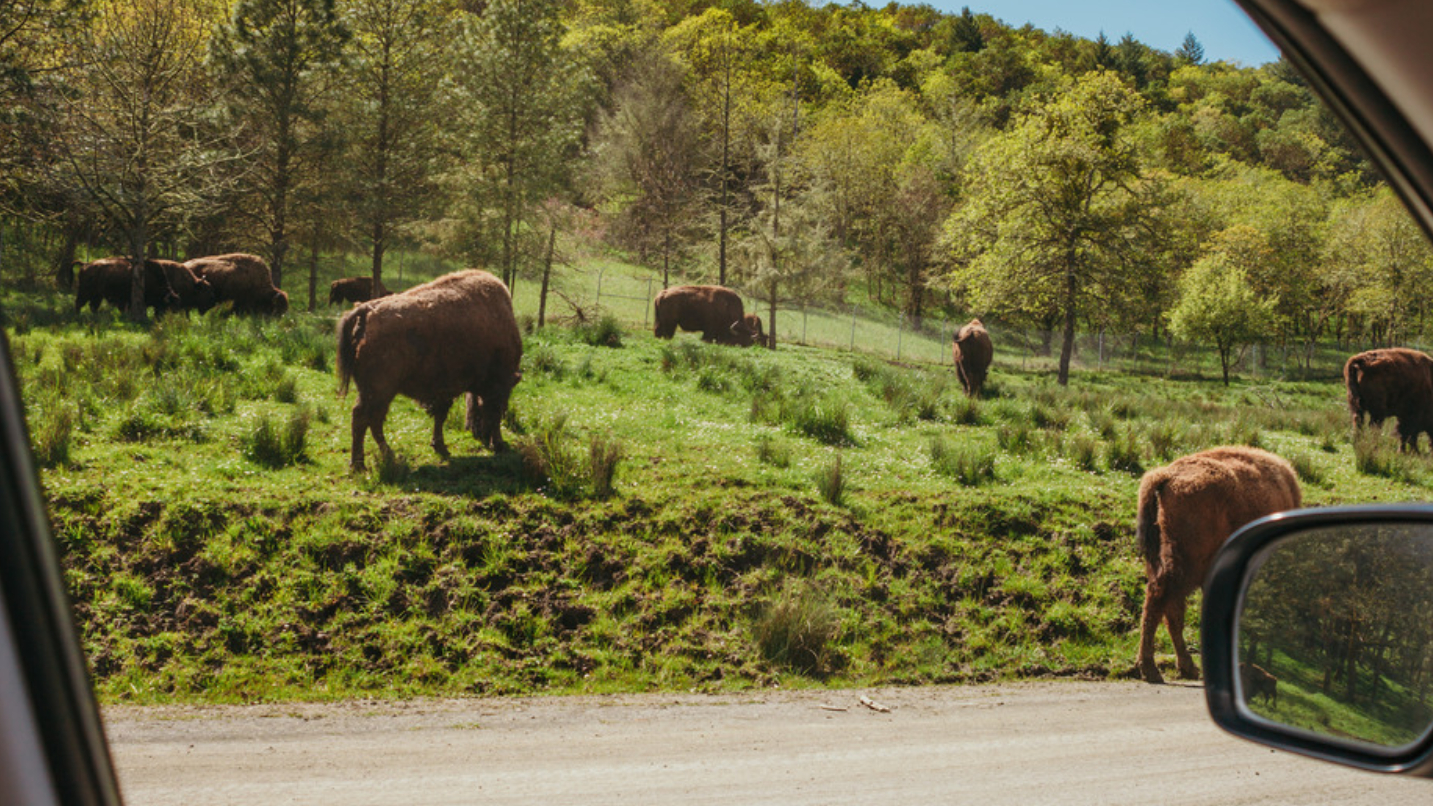
Day 1: Wine Country Wanderings
Starting in Eugene, head south on Interstate 5 to Wildlife Safari in Winston. From the convenience of your RV, you can drive through the park and see the animals, including elephants, lions and cheetahs, which are bred here. (If you’re traveling with a pet, it must be left at the on-site kennel during your visit.)
From Winston you also can explore Umpqua Valley wine country. Of course, make sure to identify someone in your party to be the designated driver, if wine tasting is on your agenda. Several family-owned vineyards offer free overnight camping for RVers through the Harvest Hosts program: MarshAnne Landing (Oakland), Henry Estate (Umpqua), Melrose (Roseburg), Chateau Nonchalant (Roseburg), Girardet (Roseburg) and Freed Estate (Winston). Tour a vineyard, sidle up to the bar for a wine tasting and then take a bottle or two of your favorite vintage back to your RV. Campsites typically don’t include hookups; pets are generally allowed.
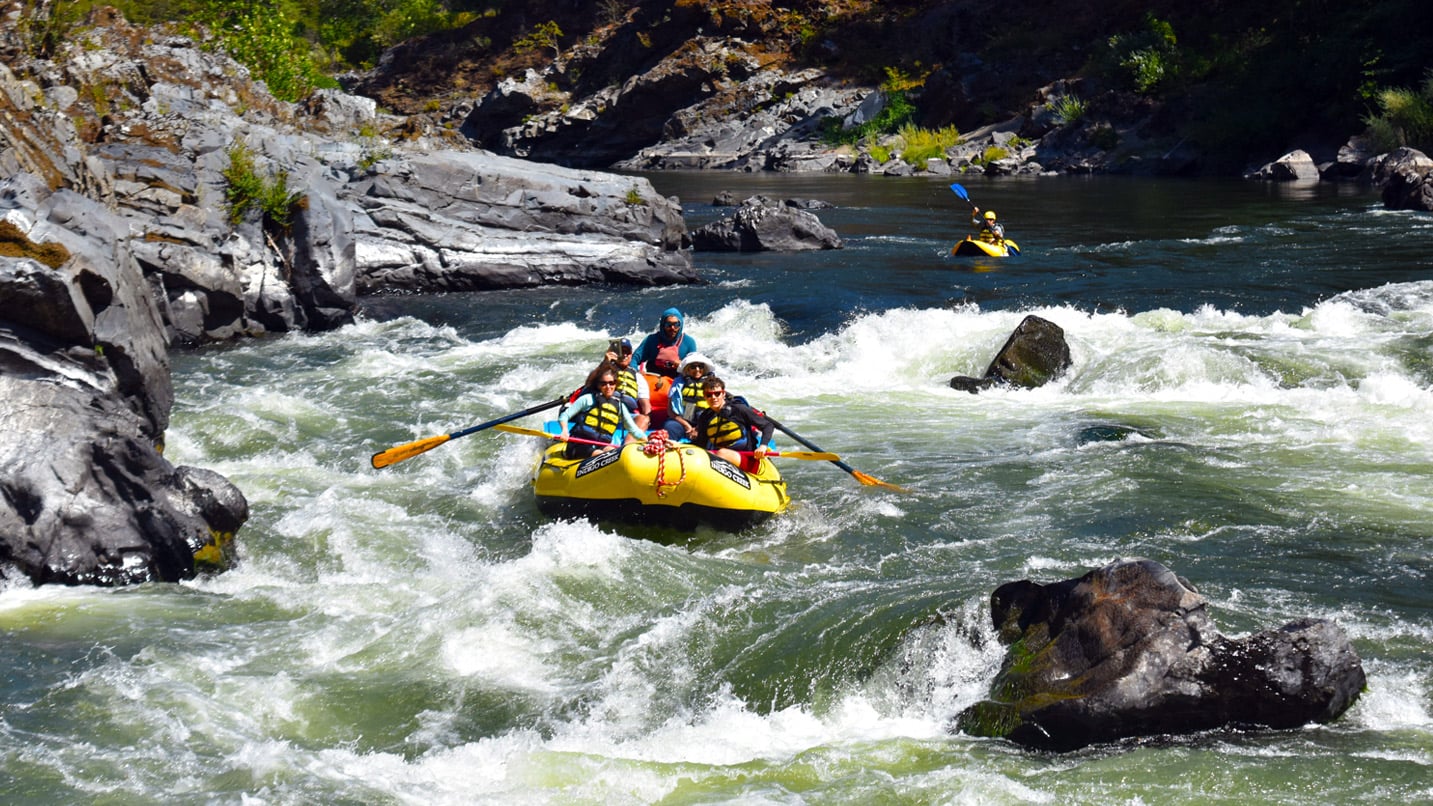
Day 2: Trail and River Adventures
Continue south on Interstate 5 to Grants Pass. Now you have a choice to make. You can detour an hour’s drive southwest on US-199 to Oregon Caves National Monument and explore any of the six hiking trails on site, ranging between less than a mile to the 9-mile trek to the 6,390-foot summit of Mt. Elijah and back.
Or you can opt for a half- or full-day rafting adventure on the Wild and Scenic Rogue River. The guides at Orange Torpedo Trips in Merlin, Indigo Creek Outfitters in Phoenix or Noah’s River Adventures in Ashland will help you choose the ideal itinerary for your crew.
After your adventure-filled day, settle in at Valley of the Rogue State Park (halfway between Grants Pass and Medford) with full hookups and access to the Rogue River or at county-run Southern Oregon RV Park (Central Point), which is especially accommodating to big rigs.
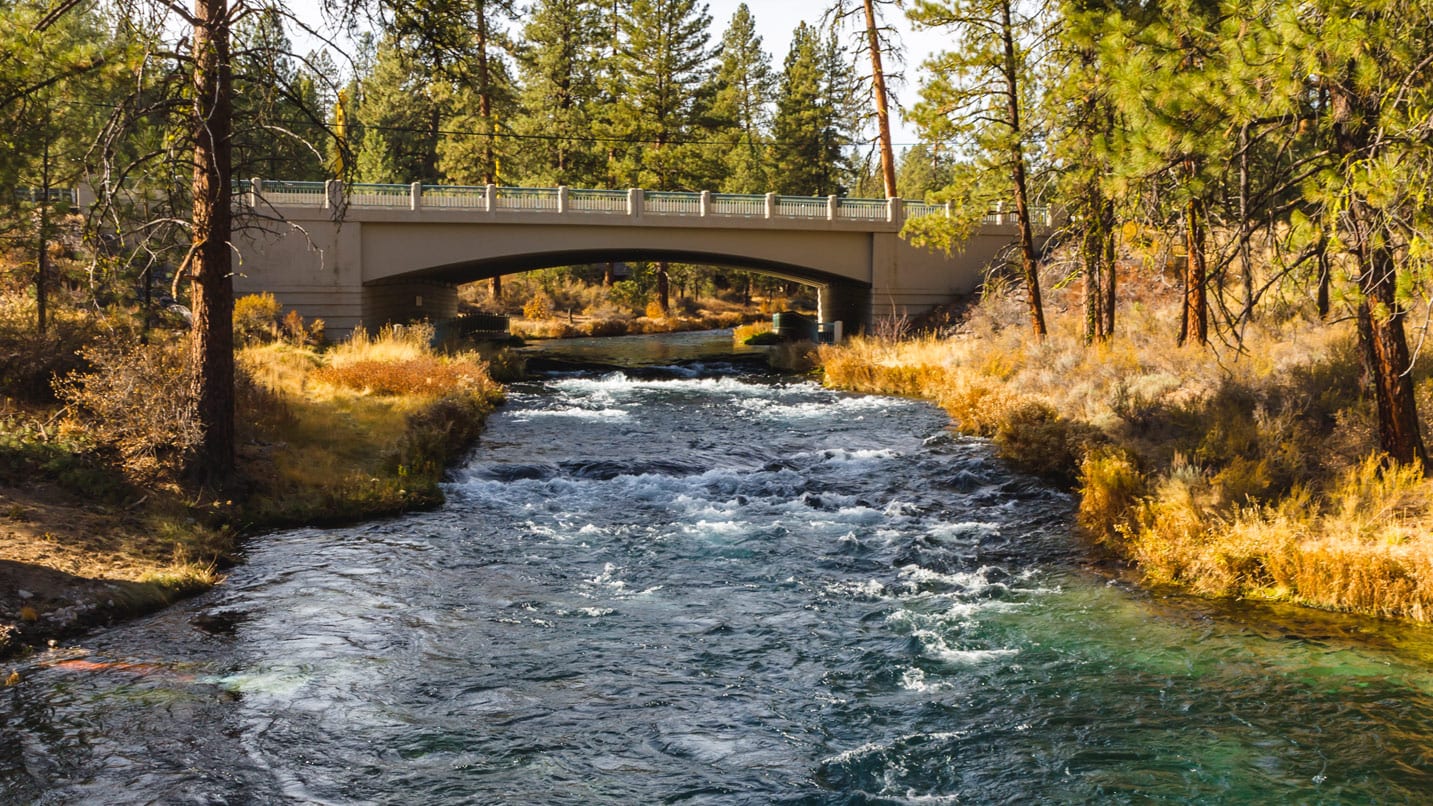
Day 3: Dancing Sands and Underground Springs
Make the two-hour drive west across the Cascade Mountains along Oregon Highway 140 to Collier Memorial State Park. This gem of a state park with full hookups sits at the confluence of the Williamson River and Spring Creek, both stunningly clear waterways that are popular with kayakers. When visiting this area, please be respectful to tribes by leaving the area cleaner than you found it and never removing artifacts from the site. Look for interpretive signs on-site about the tribal significance of the area.
Book a tour with ROE Outfitters or Sky Lakes Wilderness Adventures. If you prefer to kayak on your own, Sky Lakes will deliver rentals to the park. During your paddle, watch the “dancing sands” (where the underground spring bubbles up) and see if you can spot any Mare’s eggs, rare freshwater algae that only exist in a few places around the world.
If you have an extra day to spend in this neck of the woods, head to Klamath Marsh National Wildlife Refuge for bird-watching from a rented canoe.
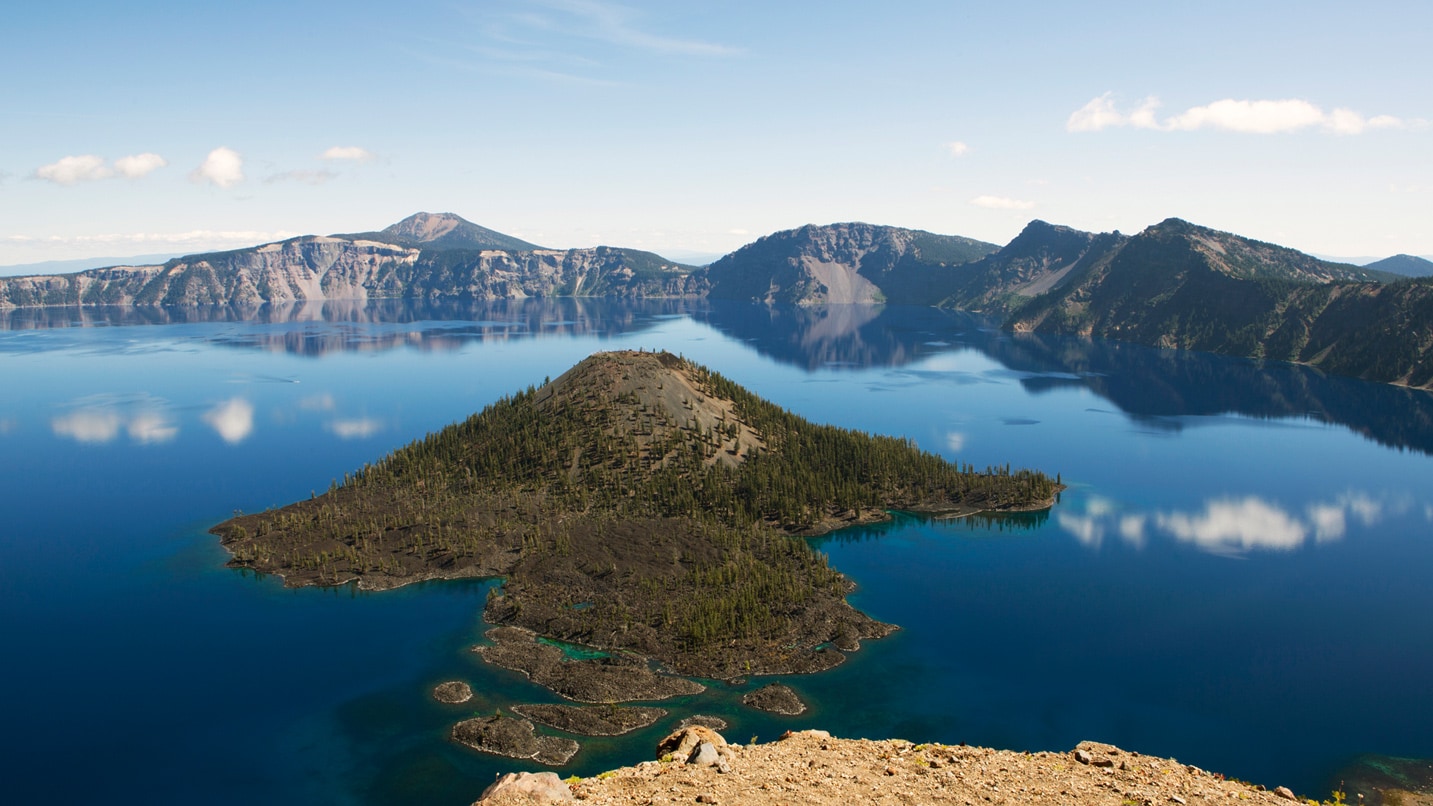
Day 4: A Day at Crater Lake
It’s time to head to Southern Oregon’s most popular destination, Crater Lake National Park. Once the site of the towering Mt. Mazama volcano, the lake was formed after a violent eruption triggered the volcano’s collapse some 7,700 years ago. What remains today is the deepest lake in the United States and the ninth deepest in the world at a depth of 1,943 feet.
Most visitors travel the park’s 33-mile Rim Drive. However, if you’re behind the wheel of a large RV, you may want to avoid driving the east side of this road. Alternatively, you could park the RV at Mazama Campground and hop on the Crater Lake Trolley for a two-hour tour. If you have enough energy to visit the lake up close, you can navigate the strenuous Cleetwood Cove Trail, a descent (and at the end of the day, ascent) of 700 feet. It’s the equivalent of climbing 70 stories each way. Once there, swim in the clean and clear cold water or hike to the top of Wizard Island, where you can stand in the crater of a volcano. If you’re driving your RV to the Cleetwood Cove parking lot, you’ll need to arrive early to get a parking space; spots are limited.
Mazama Campground is the main campground in the park and the only one that accepts RVs. You’ll find a restaurant, a camp store, showers and some sites with full hookups. It’s a short camping season from mid-June to mid-September. All sites in June are available only on a first-come, first-served basis. In July, August and September, 75% of the sites can be reserved in advance. The other 25% are first come, first served. During those peak months, you’ll want to make a reservation as the campground will fill up.
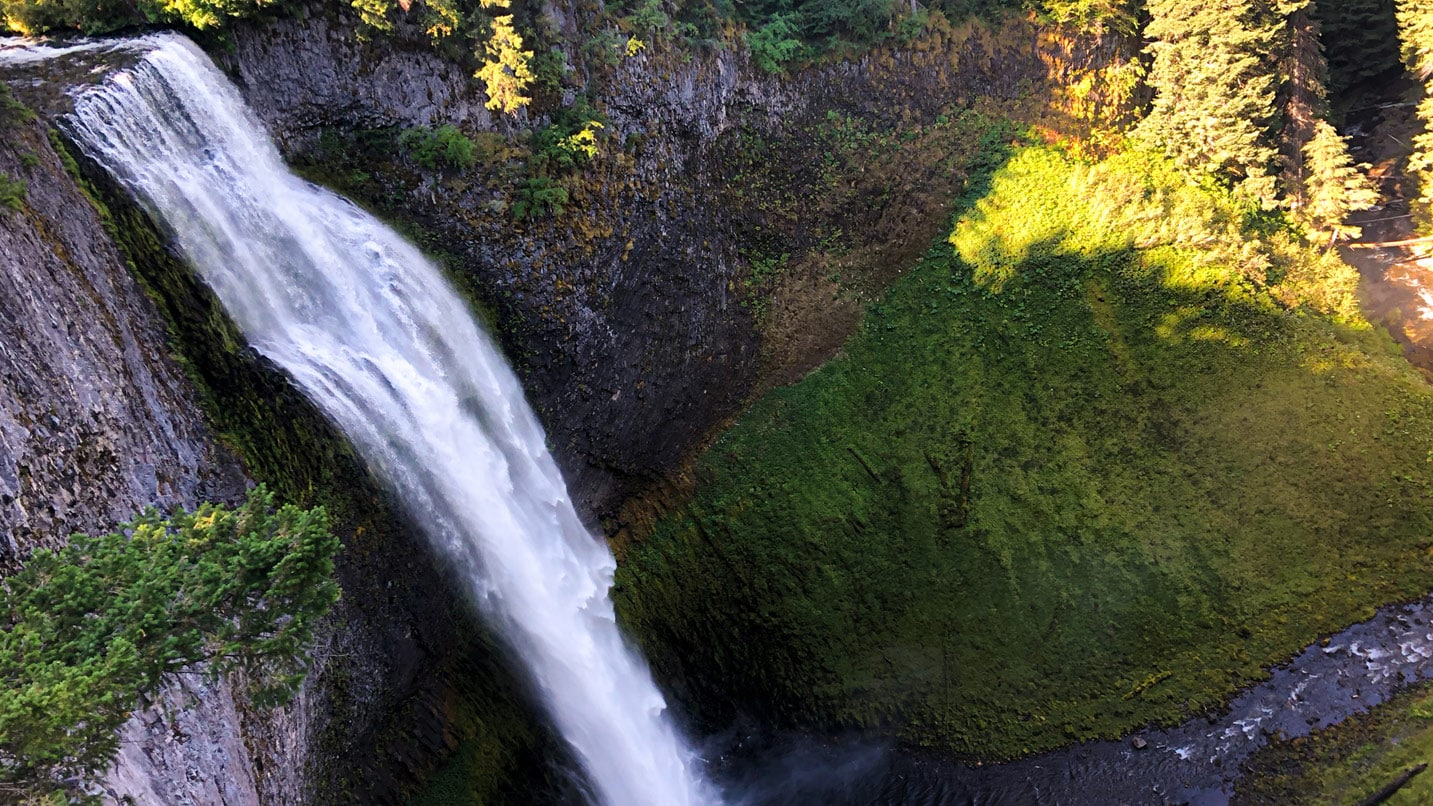
Day 5: Waterfall Wanderings
Your epic RV trip through Southern Oregon is coming to a close. Make the three-hour drive along Oregon Highway 58 back to Eugene. Along the way, stop for a photo at 286-foot Salt Creek Falls, the second-highest waterfalls in Oregon. If you need to stretch your legs, hike the steep trail to the base of the falls or the loop trail for multiple vantage points. You will need to pay a $5 day-use fee or have a recreation pass to access this area.
While exploring Southern Oregon, remember to Take Care Out There and leave these nature spots better than you found them.
